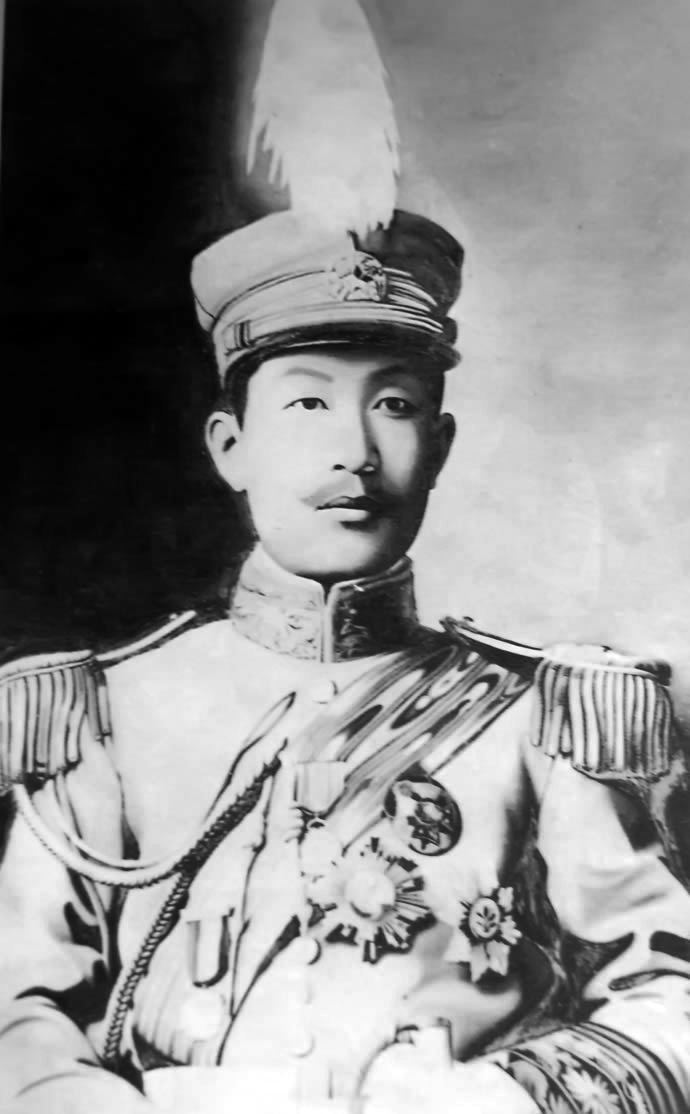Nationality Han Chinese | Name Cai E | |
 | ||
Political party TongmenghuiProgressive Party Alma mater Shiwu CollegeTokyo Shimbu GakkoImperial Japanese Army Academy Battles/wars Xinhai RevolutionNational Protection War Battles and wars Xinhai Revolution, National Protection War Similar People Yuan Shikai, Tang Jiyao, Li Liejun, Sun Yat‑sen, Andy Lau | ||
Cai E (simplified Chinese: 蔡锷; traditional Chinese: 蔡鍔; pinyin: Cai E; Wade–Giles: Ts'ai4 E4; 18 December 1882 – 8 November 1916) was a Chinese revolutionary leader and warlord. He was born Cai Genyin (Chinese: 蔡艮寅; pinyin: Cai Genyin) in Shaoyang, Hunan, and his courtesy name was Songpo (Chinese: 松坡; pinyin: Songpo). Cai eventually became an influential warlord in Yunnan, and is best known for his role in challenging the imperial ambitions of Yuan Shikai.
Contents
Cai's name has also been romanised as Tsai Ao.
Early career
Cai studied at the prestigious and progressive Shiwu Xuetang (School of Current Affairs), where he was taught by Liang Qichao and Tang Caichang, and went to Japan to study in 1899. Cai returned to China in 1900, when he was only eighteen, and attempted to take part in an uprising against the Qing Dynasty as part of the Self-Support Army, a revolutionary militia led by Tang Caichang. When the rebellion failed, Cai returned to Japan. During this second sojourn in Japan, he received military training at the Tokyo Shimbu Gakko, followed by the Imperial Japanese Army Academy.
Cai returned to Guangxi Province, where he held several military posts and established a military training academy in the years from 1904 to 1910. While in Guangxi, he joined the Tongmenghui, a Chinese revolutionary organization dedicated to the overthrow of the Qing dynasty. In 1910, he was transferred to Yunnan Province to command the 37th Brigade of the New Army and to teach at the Yunnan Military Academy in Kunming. One of his pupils at the school was Zhu De, who began studying there starting in 1909 and graduated in 1912.
Shortly after the Xinhai Revolution began on 10 October 1911, Cai, leading the 37th Brigade, successfully occupied Yunnan. After the revolution, he served as Commander-in-Chief of the Military Government of Yunnan.
Cai E was Governor of Yunnan from 1911-1913. After the revolution, Cai gained a reputation as a strong supporter of democracy, and of the Kuomintang politician Song Jiaoren. Following Song's assassination by Yuan Shikai, and Yuan's subsequent assumption of the presidency of the Republic of China, Yuan had Cai removed from office, and eventually held Cai under house arrest in Beijing. Tang Jiyao replaced Cai E as Military Governor of Yunnan in 1913.
Opposition to Yuan Shikai
In 1915, Yuan Shikai announced his plans to dissolve the Republic and proclaim himself the emperor of a new dynasty. After hearing of Yuan's intentions, Cai escaped detention on 11 November, first returning to Japan, and then back to Yunnan. After returning to Yunnan, Cai established the local National Protection Army to resist Yuan and defend the Republic.
On 12 December Yuan formally "accepted" a petition to become emperor, and protests spread throughout China. On 23 December Cai sent a telegram to Beijing threatening to declare independence if Yuan did not cancel his plans within two days. When Yuan did not respond favourably, Cai declared independence on 25 December, and made plans to invade Sichuan. The governor of Guizhou joined Cai in rebellion, declaring independence on 27 December. Yuan had himself inaugurated as emperor on 1 January 1916, and Cai successfully occupied Sichuan later that month.
Yuan sent two leading military commanders from northern China to attack Cai; but, although the forces sent by Yuan outnumbered Cai's army, Yuan's commanders were either unwilling or unable to defeat him. When it became clear that Cai's rebellion would be successful, numerous other provinces joined Cai in resisting Yuan. Guangxi and Shandong declared independence in March, Guangdong and Zhejiang declared independence in April, and Shaanxi, Sichuan, and Hunan declared their independence in May. With several provinces behind them, the revolutionaries successfully forced Yuan to abandon monarchism on 20 March 1916.
After Yuan died, on 6 June 1916, Cai held the positions of Governor-General and Governor of Sichuan. Cai left for Japan for medical treatment at the Kyushu Imperial University in Fukuoka for tuberculosis later in 1916, but died shortly after his arrival in Japan. He was accorded a state funeral in China at Yuelu Mountain in Hunan on 12 April 1917.
Legacy
Many of the warlords who served under Yuan Shikai did not support Yuan's ambition to revive the monarchy, and Cai E was one of the leading figures who successfully forced Yuan to step down. He served as an inspiration for the young Zhu De, who later became one of the most successful military leaders of the Chinese Red Army, the forerunner to the People's Liberation Army.
